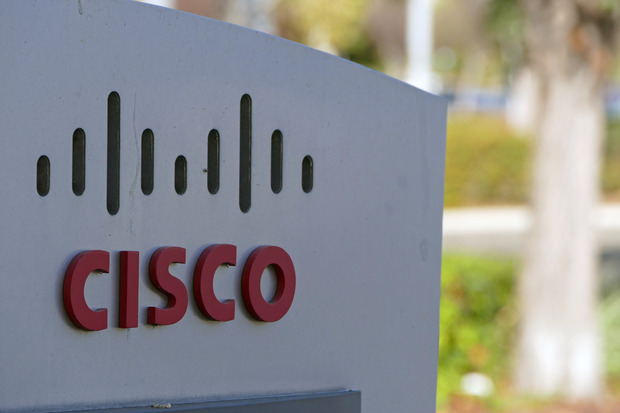Aruba’s top execs talk new tech, IoT and the competition
In the roughly two years since Aruba Networks was acquired by HPE, it’s become the larger company’s de facto wireless arm, more or less taking over HPE’s networking division and changing almost not at all after the merger.
Network World sat down with Senior Vice President and General Manager Keerti Melkote and CTO Partha Narasimhan at Aruba’s annual Atmosphere conference in Nashville last week to talk about future wireless technology, security, and more.
802.11 expands
Different forthcoming wireless standards will have different effects on the Wi-Fi ecosystem, according to both men. 802.11ax is interesting, Narasimhan said, in part because it’s the first time that 802.11 is addressing reliability and efficiency directly in a specification. Even the latest 802.11ac technology is mostly optimized for downloading large files, despite the fact that one of the biggest challenges for future wireless tech is handling large numbers of densely packed devices that might not all be talking at the same time.
“A lot of the perceptions about Wi-Fi being unreliable will get addressed with 802.11ax,” said Narasimhan.
Gigahertz technology like 802.11ad and 802.11ay, on the other hand, aren’t likely to become widespread endpoint standards, thanks to short effective range and the need for revamped chipsets in mobile devices to make them compatible and achieve what Narasimhan calls “horizontal” growth – that is to say, be used in a wide longitudinal set of devices.
“The way [a wireless standard] is going to get horizontal is if it gets into your phone,” he said. When a new wireless technology makes it into endpoints like phones and laptops, it provides a considerable degree of incentive for wireless networking companies like Aruba to implement them in access points.
The frequency restrictions of modern-day endpoints are at the heart of other efforts to broaden wireless capabilities, like the discussions around opening up 3.5GHz and 6GHz unlicensed spectrum – which is close to the 2.4GHz and 5GHz ranges used by Wi-Fi.
Recent exploration of bringing extra unlicensed bandwidth to the party is welcome news, although Melkote said there are still decisions to be made.
“There’s a lot of interest in figuring out what to use it with – should Wi-Fi be the use case, should LTE-U be the use case, and so on,” he told Network World.
“I think there is a lot of effort to try and open up more spectrum for unlicensed use,” added Narasimhan. “If you look at adjacent frequencies, the 6GHz range is interesting.” It could increase the number of available Wi-Fi channels without necessitating the development of replacement chipsets, he noted.
The news that Verizon is rolling out the first U.S. LTE-U implementations doesn’t faze Melkote – for one thing, he says, the technology that Verizon’s using is actually License Assisted Access, a technology that’s substantially different from the one that caused a spat between companies dependent on Wi-Fi and the cellular industry last year.
None of the latest in carrier technology has much effect on enterprise Wi-Fi, according to Melkote, in part because there are orders of magnitude more Wi-Fi devices out there than cellular, and any technology that messes with Wi-Fi connectivity will face massive consumer backlash – particularly Millennials.
“I personally think if you do anything to hurt the Wi-Fi, users will flip out,” he said. “It’s the Wi-Fi generation. You can’t mess with them!”
The IoT security threat
Both men also talked about the threat posed by IoT devices with lax security – something like 84% of companies that have adopted IoT have had at least one IoT-related security breach, according to the company’s research.
The problem with IoT is that security is not top-of-mind, according to Melkote. “If you look inside what these things are, they’re really small computers, so they’re susceptible to attack.”
It’s why Melkote’s pitching Aruba’s idea of a machine learning system that profiles and monitors IoT devices on a network as an answer to the security question – if the move to secure IoT gizmos at the device level is too slow, protection must come from elsewhere.
“For example, the thermostat should be talking to its controller – it has no business talking to an external website.”
Another part of the problem is that IoT can go unnoticed on a network for months or years, according to Narasimhan, and that their ability to defend themselves can suffer over time.
““If you look at IoT devices, they tend to hang around in the system for long periods of time,” he said. “My favorite example is last year, a guy came to fix my refrigerator at home. He read some label and said ‘this has been here since 1989.’ We’ve only lived there 10 years. Think of the state of the art in 1989!”
Aruba vs. Cisco
Melkote was unsurprisingly bullish on his company’s competitiveness with networking’s 800-pound gorilla, Cisco, saying that the larger company’s bifurcated wireless offerings – in-house product Aironet and 2012 acquisition Meraki – effectively offered zero competitive options for consumers.
“Cisco has got two wireless platforms – in one case you get decent hardware but lousy software, and in the other you get good software but bad hardware.”
This story, “Aruba’s top execs talk new tech, IoT and the competition” was originally published by
Network World.







